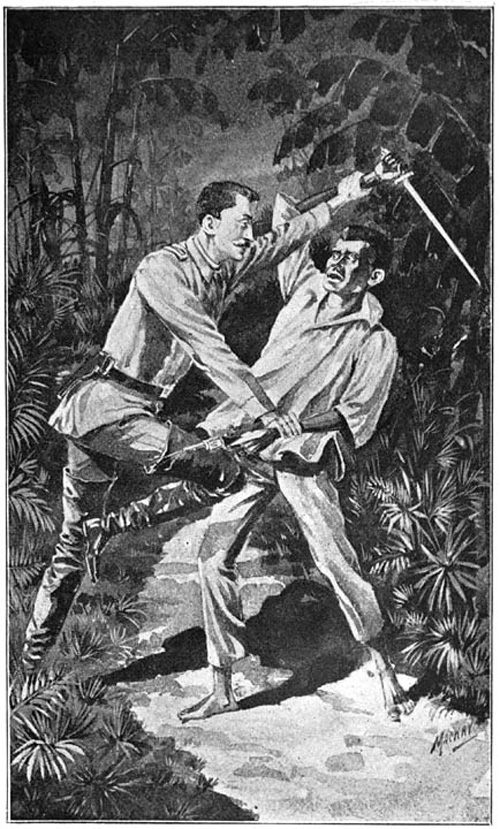
An illustration by J. Alexander Mackay published in the book Bamboo Tales by Ira L. Reeves (1900) IMAGE FROM PROJECT GUTENBERG
The Bolomen of the Revolution by Perry Gil S. Mallari , FIGHT Times Editor
Arma Blanca is the name of the clandestine regiment of Filipino bolomen active during the revolution against the Spaniards and the Americans. Arma Blanca is a Spanish singular term for a bladed weapon like a sword or a knife.
A fairly recent mention of Arma Blanca was made in Orlino Ochosa’s book Bandoleros: The Outlawed Guerillas of the Philippine-American War of 1903 to 1907 (New Day Publications, 1995), and it reads, “Manila’s Arma Blanca that phantom army of bolomen whom General Luna had so much depended upon in his bold attack of Manila at the start of the war with the Americans.”
An earlier reference to Arma Blanca can be found in The Philippines Past and Present, by Dean C. Worcester released in 1914. Worcester, who had served as Secretary of the Interior of the Philippine Islands from 1901 to 1913 and was a member of the Philippine Commission from 1900 to 1913, wrote, “The regiment of Armas Blancas had already been raised in Tondo and Binondo. It was in existence there in December, 1898, and may have been originally organized to act against Spain.”
The bolo being both a farm implement and a weapon was carried with impunity by Filipinos even in the presence of Spanish and American soldiers. Its blade is often designed heavily weighted towards the tip for ease of chopping hence when used in combat, it can easily severe a limb with a single stroke. The Philippine bolo boasts of a sturdy construction and minor dents on its blade could easily be fixed by a little hammering and filing.
In the absence of guns, the Philippine revolutionary forces greatly depended upon the bolo in inflicting casualty on the enemy. A part of Worcester’s book reads, “There is no reason for believing that this is a complete statement of sandatahan [Filipino armed groups] organized in Manila by the end of January, and yet this statement gives a force of at least 6,330 men. General Otis said that this force had been reported to him as being 10,000 men. It is probably true that only a small number of them had rifles; but armed with long knives and daggers they could have inflicted much damage in a sudden night attack in the narrow and badly lighted streets of Manila.”
Filipino bolomen even received precise instructions on how to use the blade in conducting raids to snatch the guns of their enemies. A part of Emilio Aguinaldo’s order to the sandatahan was included in Worcester’s book, and it reads, “At the moment of the attack the sandatahan should not attempt to secure rifles from their dead enemies, but shall pursue, slashing right and left with bolos until the Americans surrender, and after there remains no enemy who can injure them, they may take the rifles in one hand and the ammunition in the other.”
Continue reading story at: http://www.manilatimes.net/the-bolomen-of-the-revolution/104227/
















